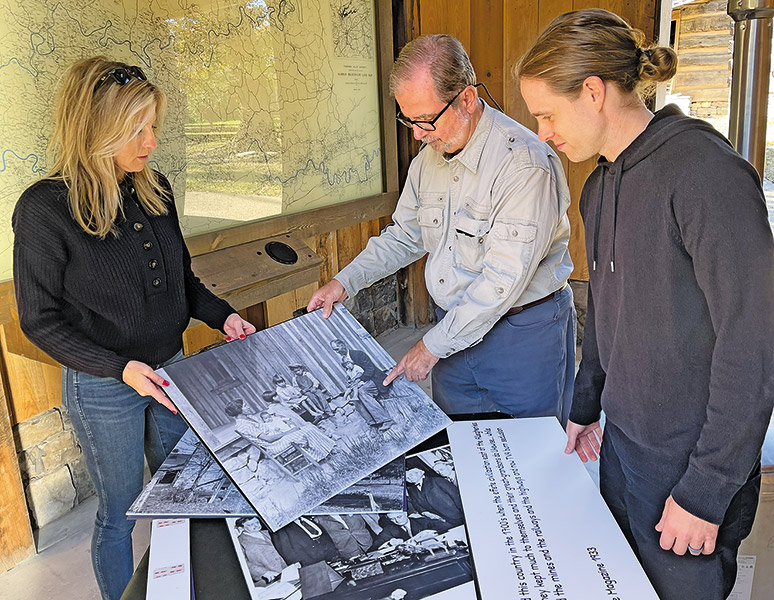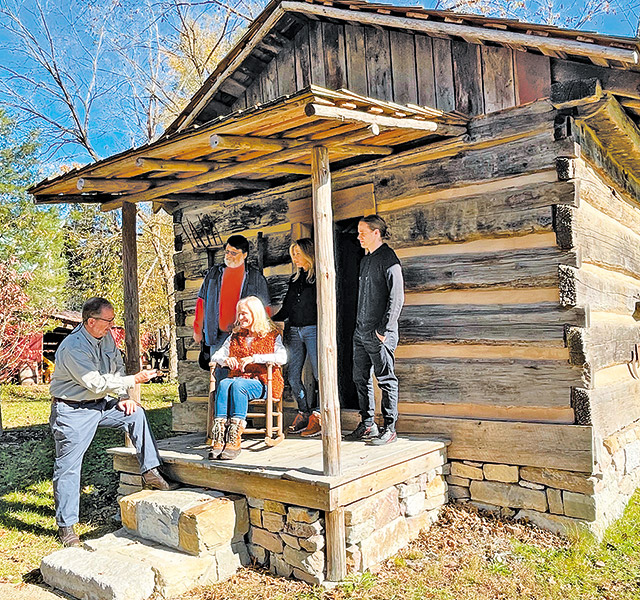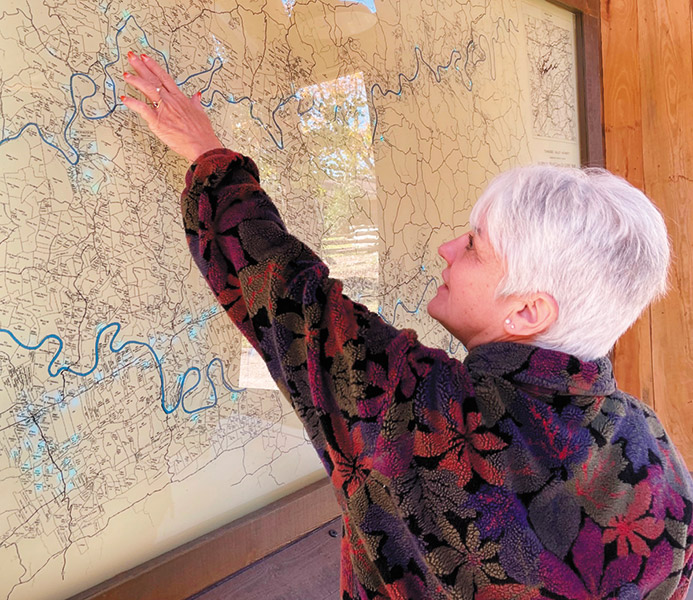The past faces of Appalachia
Exhibit focuses on people displaced by Norris Dam
A new exhibit opens today (Wednesday) at the Museum of Appalachia, honoring the families displaced by the Tennessee Valley Authority in the early 1930s as it began construction of Norris Dam.
Called “The Mountaineers’ Sacrifice & Renewal,” the exhibit includes a building provided by TVA that displays some of the history of the area when the federal utility moved in, including photographs of displaced families and their homes, churches, cemeteries and businesses.
There’s also a detailed interactive wall map that shows each of the properties affected by the takeover of the land, with each tract showing the owner’s name. The map has an audio track that explains the displacement, and lights that show points of interest during the presentation.
Just behind that building, the museum has reconstructed the original cabin where two elderly Arnwine sisters lived in Grainger County up until they were displaced by the TVA evacuation of the area.
The one-room home was once noted as the smallest structure on the National Register of Historic Places, according to the museum. It was built in 1800 on the banks of the Clinch River in Liberty Hill, and later “deconstructed” and relocated when TVA moved in.
“We wanted to tell the story of what the area was like before TVA took over,” said museum President Elaine Irwin Meyer, daughter of museum founder John Rice Irwin. “TVA gave us money to build the kiosk for the map and historical photos.”
The museum also got two of the displaced buildings, including the Arnwine cabin and “Gwen Sharp’s playhouse,” Meyer said. “Her daddy built the playhouse, and it has been said to be the only intact building left from the area” that was claimed by TVA.
“We’re focusing on the Arnwine cabin, which we already had on site here,” she said. “We moved it to be near the exhibit kiosk.”
The museum hopes to expand the exhibit later by adding “a 1930s house to show what it was like in the area after the dam was finished,” Meyer said.
“We also want to show all the good that came from TVA in the area, including lights and heat,” she said.
The additional exhibit will come as soon as the museum can raise the money for it, Meyer said.
“We already have a house we can use,” she said. “Or we could do a façade in the exhibit building.”
“The Mountaineers’ Sacrifice & Renewal” exhibit is close to the museum gift shop/restaurant building, and will be part of the many exhibits open for visitors, beginning today, Meyer said.
“This exhibit is a testament to the diligent and industrious people who built this incredible dam, and also to the sacrifice of a people who left their lives behind for the promise of progress,” Meyer said.
In fall 1933, during the Great Depression, TVA began construction of Norris Dam, the first major project in a series of flood-control and electric-power-generation dams in the Tennessee Valley. The dam is just west of the confluence of the Clinch and Powell rivers.
The Museum of Appalachia, at 2819 Andersonville Highway in Norris, is open from 9 a.m. to 5 p.m. daily. For more information, visit museumofappalachia.org or call 865-494-7680.




